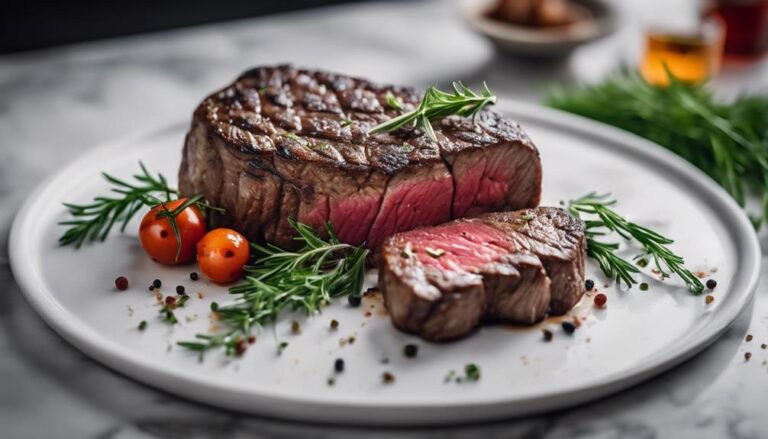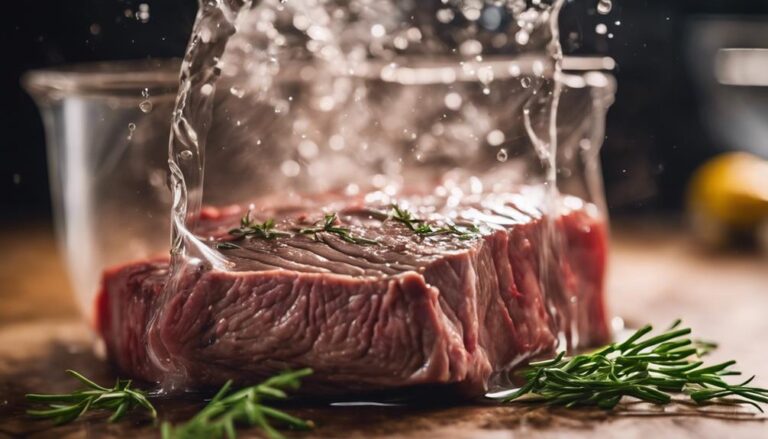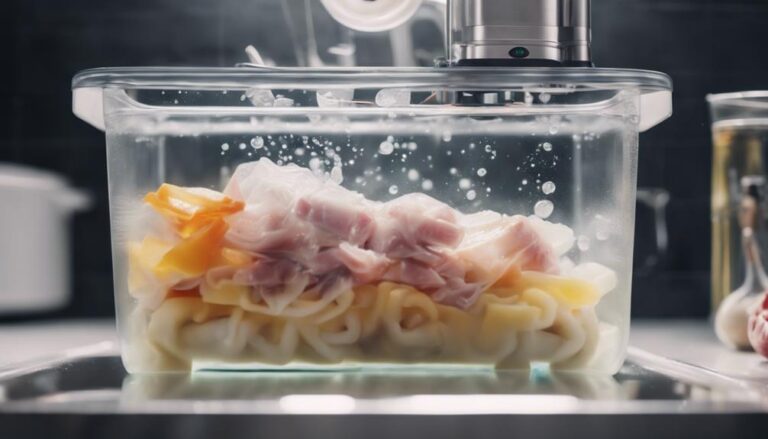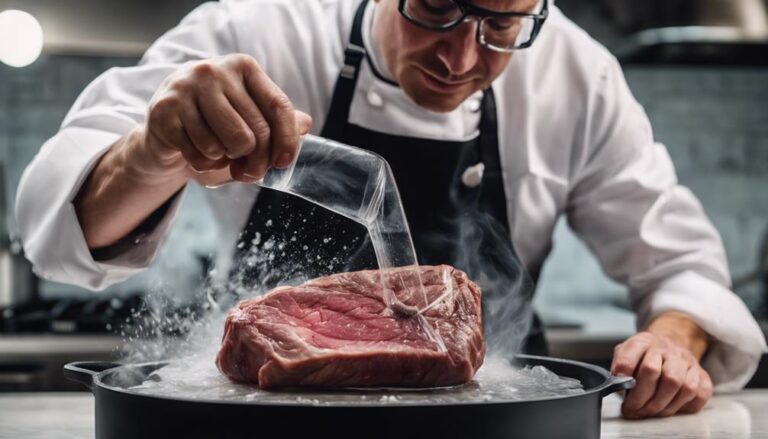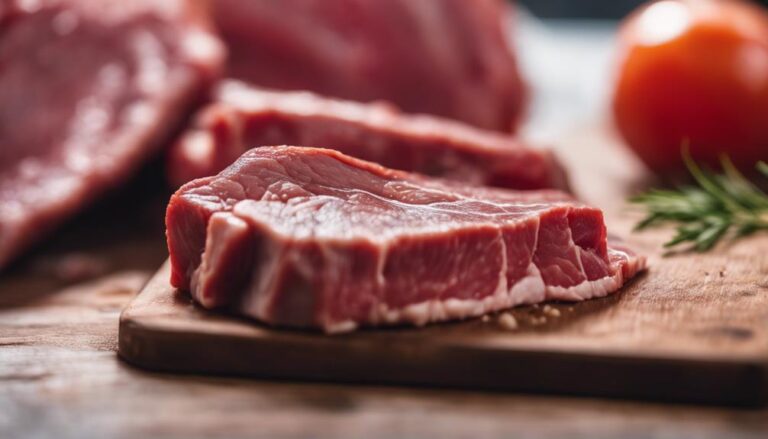What Is Sous Vide Cooking? An Easy Guide for Beginners
Hey, curious chef! Sous vide cooking is like a spa day for your food. Imagine sealing your ingredients in a bag, then pampering them in a warm water bath set at just the right temperature. This method locks in flavors and juices, giving you tender, mouthwatering results. And guess what? There's a secret sauce to perfect searing too! If you want to uncover more tips and tricks to elevate your culinary game, stick around and discover the flavorful world of sous vide cooking!
What You Will Learn Here
- Sous vide involves vacuum-sealing food for precise cooking.
- Cooking is done in a water bath with controlled temperature.
- Retains flavors and juices for tender, flavorful results.
- Essential tools include an immersion circulator and vacuum sealer.
- Perfecting searing post sous vide enhances texture and taste.
Understanding Sous Vide Cooking Basics
If you're new to sous vide cooking, understanding the basics is key to achieving delicious results. Sous vide, which translates to 'under vacuum' in French, involves vacuum-sealing your food in air-tight bags and cooking it in a water bath with precise temperature control. This method is like giving your food a luxurious spa treatment, ensuring it retains all its juices and flavors, resulting in tender and succulent outcomes every time.
The magic of sous vide lies in its precise temperature control during the cooking process. By cooking your food at a consistent temperature for an extended period, you're guaranteeing perfectly cooked meals with enhanced flavors. It's like having a personal chef in your kitchen, meticulously taking care of your dinner while you relax.
Essential Tools for Sous Vide Beginners
To start your sous vide cooking adventure successfully, make sure you have essential tools such as an immersion circulator for precise water heating. This handy device guarantees your water bath stays at the perfect temperature to cook your food just right.
Next up, grab a vacuum sealer to properly seal your ingredients before they take a dip in the warm water. These sealed packages lock in all the flavors and juices, giving you a delicious end result.
When it comes to containers, Cambro containers are your best friends for maintaining water temperature. Don't forget the binder clips – they'll keep your bags secure in the water bath, so you can relax while your meal cooks.
And here's a fun tip: throw in some Ping-Pong balls to reduce water evaporation and keep the heat where it should be. With these tools in your arsenal, you'll be a sous vide pro in no time!
Temperature and Time Guidelines for Success
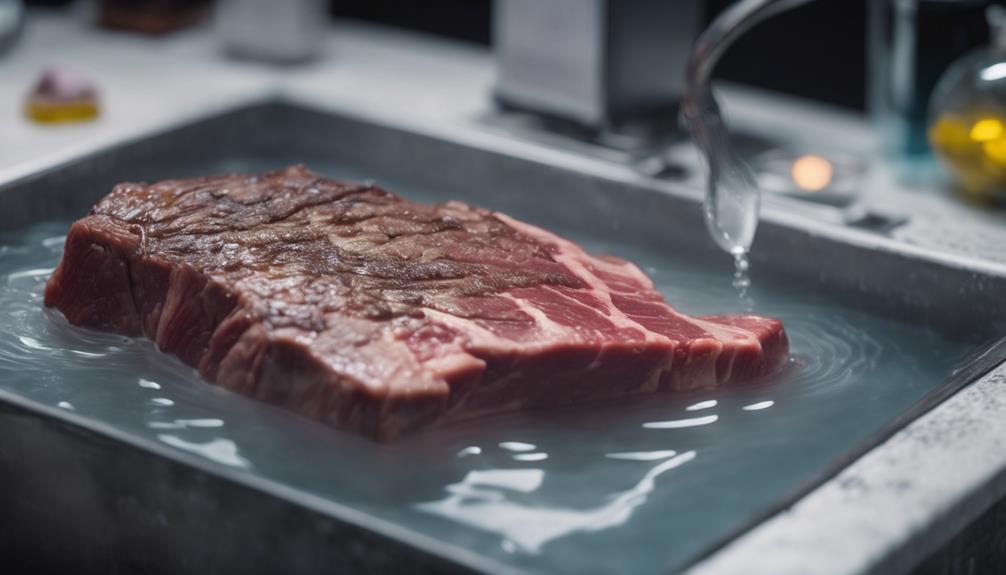
For successful sous vide cooking, precise temperature control and adherence to recommended cooking times are essential factors in achieving perfectly cooked results. When it comes to sous vide, precision cooking is key – we're talking about hitting those temperatures like a boss and timing it just right. Below are some general guidelines to steer you in the right direction. Remember, safety first, so make sure you check those sous vide charts for specific recommendations.
| Food | Temperature | Time |
|---|---|---|
| Steak | 130°F | Medium-rare |
| Chicken | 140°F | Safe to eat |
| Vegetables | 183°F | Tender goodness |
Whether you're aiming for a juicy medium-rare steak, safe-to-eat chicken, or some tender veggies, these temperature and time combos will guide you towards culinary success. So, grab your sous vide machine, set the temperature dial with confidence, and let the magic of precision cooking unfold!
Perfecting the Searing Process
When searing sous vide-cooked dishes, remember that this important step enhances both texture and taste greatly. Searing is like giving your food a flavorful high-five after its relaxing sous vide bath. It adds that gorgeous color and a burst of flavor that will make your taste buds do a happy dance.
Picture this: you pat your meat dry, season it like a boss, then sear it at high temperatures to create a mouthwatering crust. This crust is what dreams are made of – crispy on the outside, tender on the inside. But hey, safety first! While searing is fantastic for taste and texture, it won't magically change internal temperatures. Different meats have specific safe levels you shouldn't mess with.
Tips for Safe and Successful Sous Vide
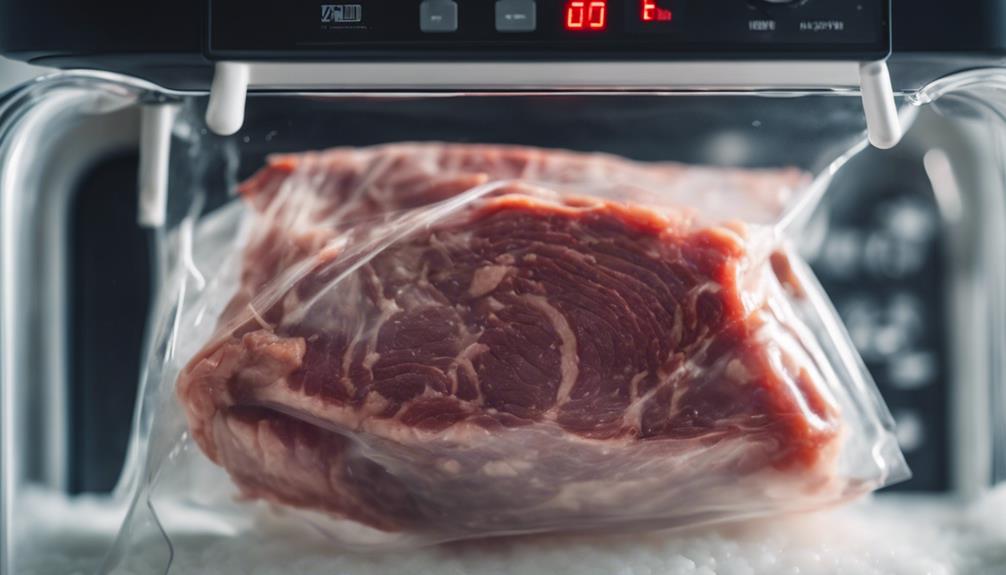
After perfecting the searing process to enhance texture and taste, now guarantee safe and successful sous vide cooking by following these essential tips.
First off, make sure you have a reliable sous vide circulator to nail that precise temperature control – no one wants a lukewarm chicken surprise! Stick to recommended cooking times and temperatures like your sous vide life depends on it.
Proper food handling is key, so get friendly with vacuum sealing or Sous Vide Bags – think of it as giving your food a cozy little hug. Keep that water bath temperature in check between 130°F to 160°F; we're cooking, not cultivating a bacteria farm!
Oh, and always go for pasteurized ingredients – your tummy will thank you later. Follow these guidelines, and you'll be a sous vide pro in no time, creating mouthwatering dishes without breaking a sweat. Happy cooking!
Frequently Asked Questions
What Is the Basic Sous Vide Cooking Method?
For precise cooking, seal food in a bag, immerse in hot water, control temperature, and wait. Slow-cook meats to tender perfection with juicy results. Seal in flavors, create versatile dishes, and enjoy easy cleanup.
What Is the First Thing I Should Sous Vide?
Start with forgiving proteins like chicken breasts or salmon to ease into sous vide. Experiment with seasonings for flavor. Follow timing charts for perfect doneness. Guarantee safety with equipment. Try different marinades for enhanced taste.
Can You Use Ziploc Bags for Sous Vide?
Yes, you can use Ziploc bags for sous vide cooking. Make sure they are labeled 'freezer-safe' or 'heavy-duty.' Squeeze out air before sealing for proper cooking. While not as foolproof as vacuum sealers, Ziploc bags work effectively when done correctly.
What Is a Disadvantage of Sous Vide?
Achieving a sear post sous vide is essential for texture and flavor enhancement. Searing meat after sous vide can be time-consuming compared to traditional methods. Some may find this step inconvenient or requiring extra effort.
Conclusion
So there you have it, folks! Sous vide cooking may sound fancy, but it's actually a simple and foolproof way to cook up some delicious meals.
With the right tools, temperature guidelines, and a little searing finesse, you'll be a sous vide pro in no time.
Just remember to have fun, experiment, and don't be hesitant to immerse yourself in this culinary adventure.
Happy cooking!






